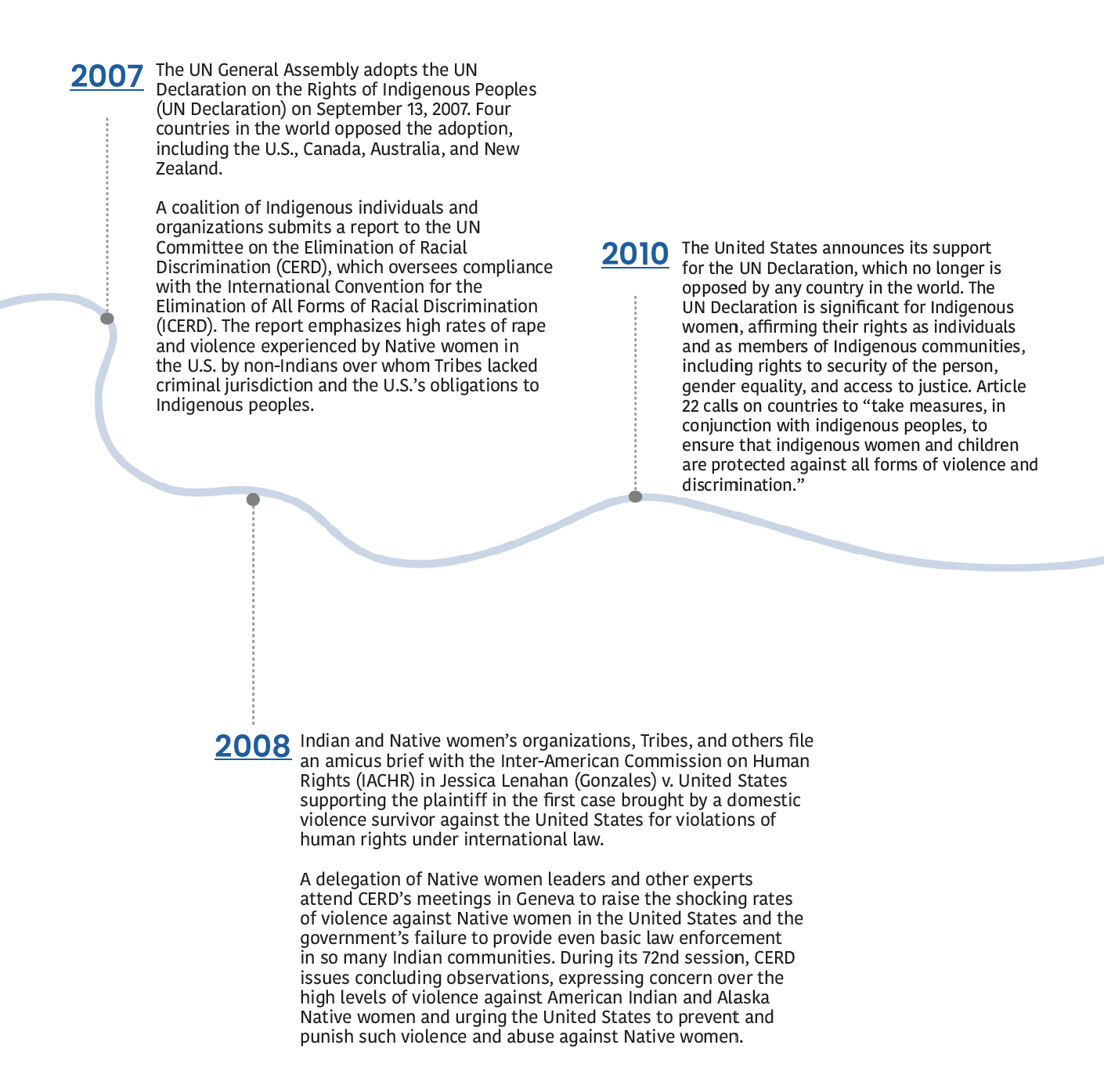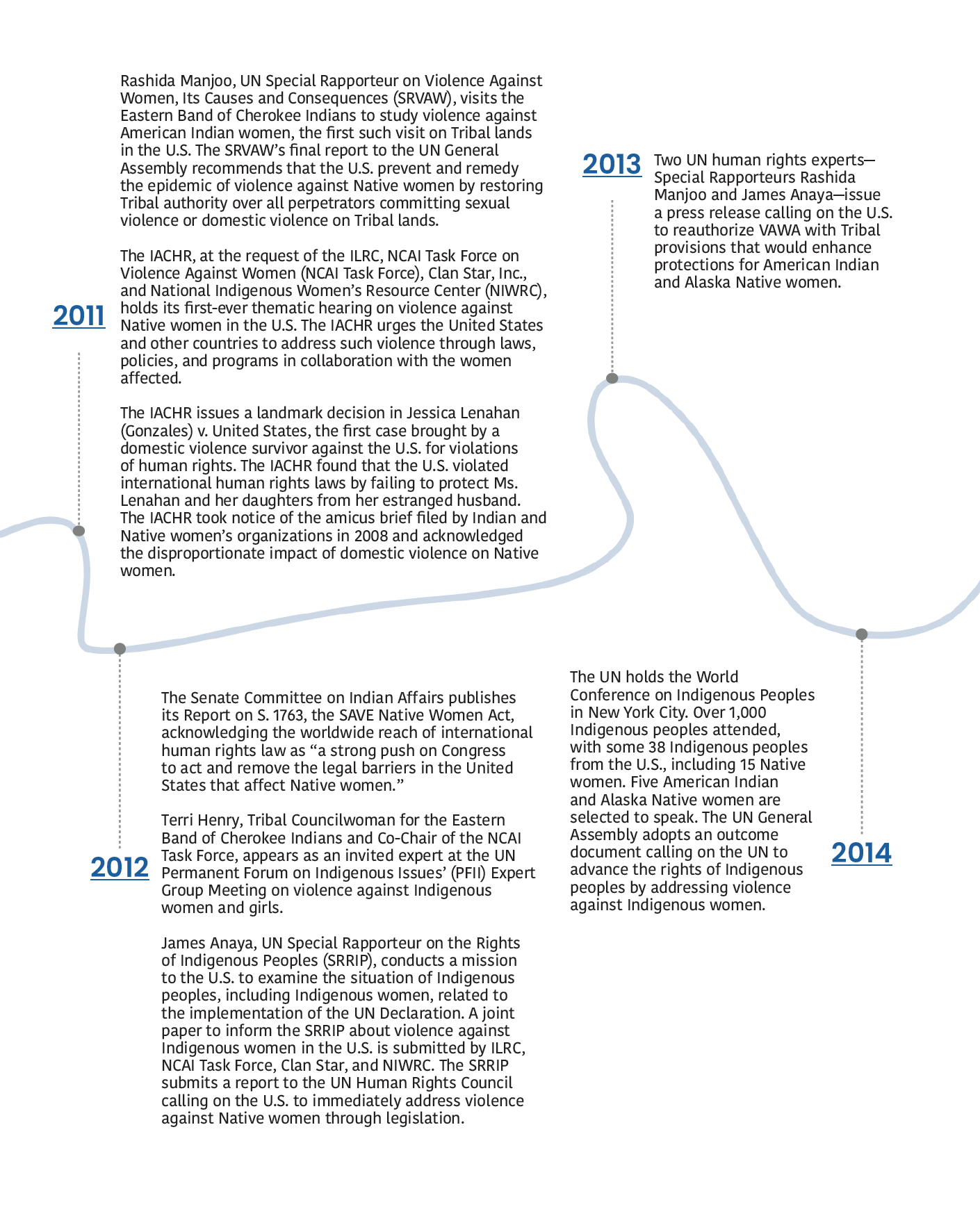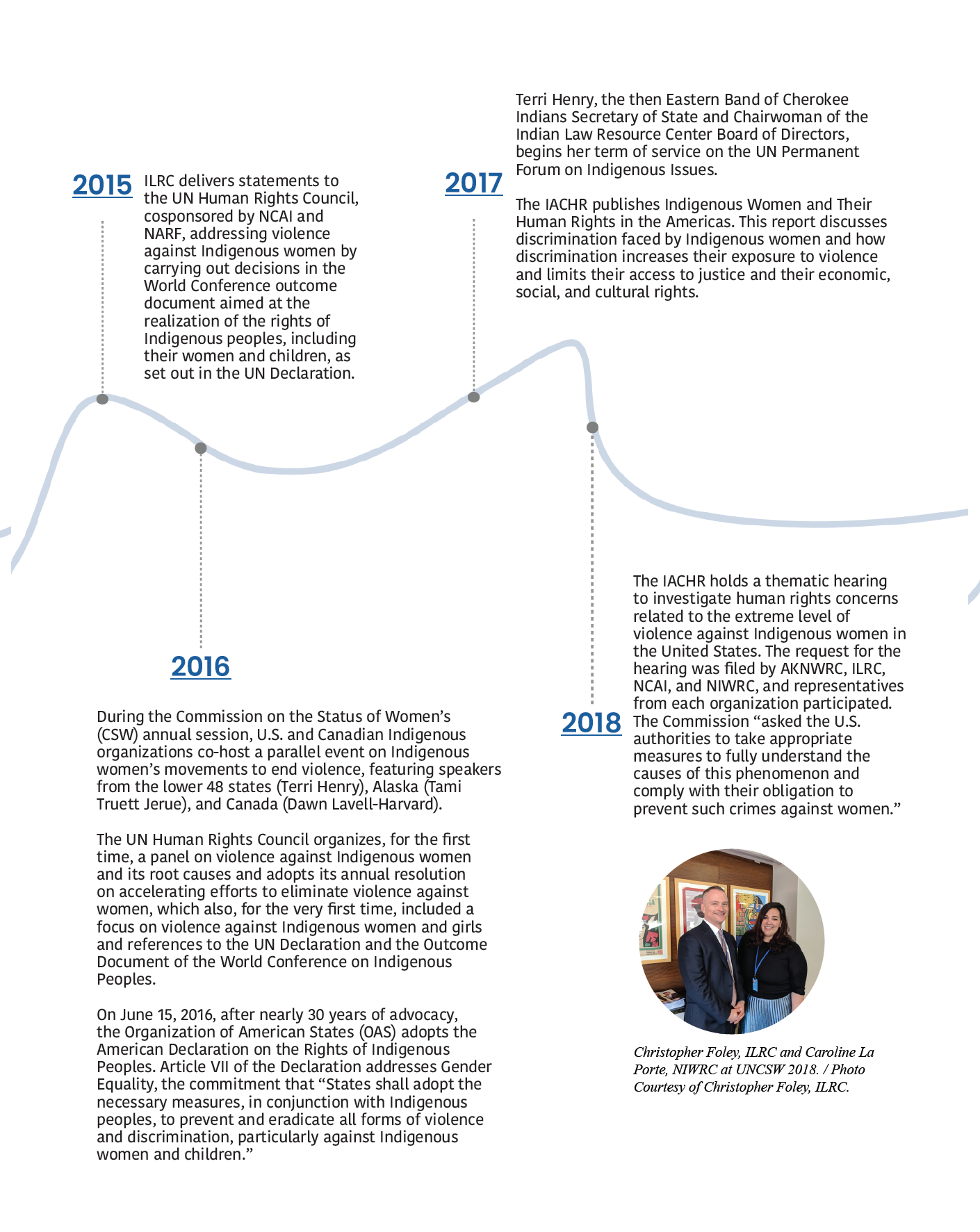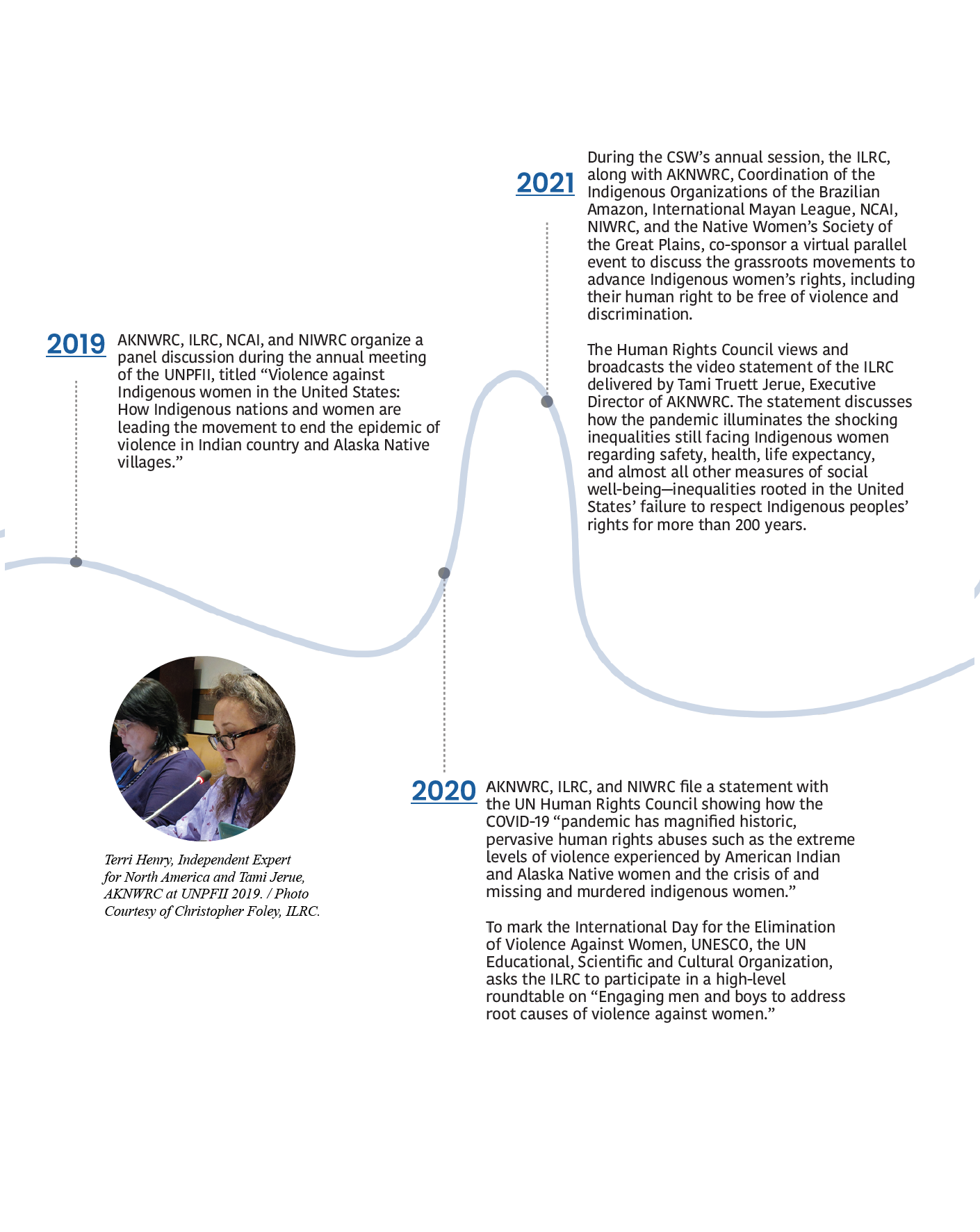Advancing Indigenous Women’s Rights Using International Advocacy
The epidemic of violence against American Indian and Alaska Native women shines a spotlight on the United States’ failure to respect Indigenous women’s rights. This is a failure under the United States’ own law, including the trust responsibility to assist federally recognized Indian and Alaska Native Nations in safeguarding the lives of their women, but also under international human rights law. The right to be free of violence is arguably the most basic human right recognized under international law.
Indigenous women’s organizations and Tribes have collaborated for nearly two decades on a national strategy reframing violence against Native women as a human rights issue, not just a law enforcement matter, and combining domestic and international advocacy to raise global awareness, generate support, and urge strong federal action to restore safety to Native women.
The United Nations (UN) and the Organization of American States (OAS) offer American Indian, Alaska Native, and Native Hawaiian women important advocacy opportunities to raise global awareness about the epidemic of violence against Indigenous women in the US. Participation in international advocacy spaces helps American Indian, Alaska Native, and Native Hawaiian women connect with allies worldwide, human rights bodies and experts, and Indigenous women’s organizations who can all help put top-down global pressure on the United States to meet its international human rights obligations.
International advocacy at the UN and the OAS also adds significant leverage to our domestic efforts to strengthen Tribal sovereignty to restore safety to Native women and girls. Senate Committee on Indian Affairs Report No. 112-265 (2012) on the Stand Against Violence and Empower Native Women Act (SAVE Native Women Act) explains:
“It is important that the United States consider recommendations from experts with the United Nations and the Organization of American States as it begins to take action. A report to the U.N. General Assembly in 2011 concluded that the United States should ‘consider restoring, in consultation with Native American tribes, Tribal authority to enforce Tribal law over all perpetrators, both native and non-native, who commit acts of sexual and domestic violence within their jurisdiction.’”
The report goes on to also acknowledge:
“The global reach and international human rights law is a strong push on Congress to act and remove the legal barriers in the United States that affect Native women. According to one advocate, ‘Native women must not continue to suffer disproportionately higher rates of rape, sexual assault, and murder, and lower rates of enforcement, prosecution, and punishment just because they are Indian and live on an Indian reservation or in an Alaska Native village.’”
For nearly two decades, the Indian Law Resource Center has helped Indigenous women’s organizations access the UN and OAS, has helped prepare Indigenous women to work in those spaces, and has worked with our partners to develop oral statements, written submissions, and panel presentations to educate the world about the situation in Alaska and Indian country. The Center and its partners have raised awareness about violence against Native women in the US in many UN bodies, including but not limited to the Committee on the Elimination of Racial Discrimination, Human Rights Committee, Special Rapporteur on Contemporary Forms of Racism, Special Rapporteur on Violence Against Women, Special Rapporteur on the Rights of Indigenous Peoples, Permanent Forum on Indigenous Issues, Commission on the Status of Women, and the Human Rights Council.
The following timeline highlights some of the collaborative international advocacy over the years.









